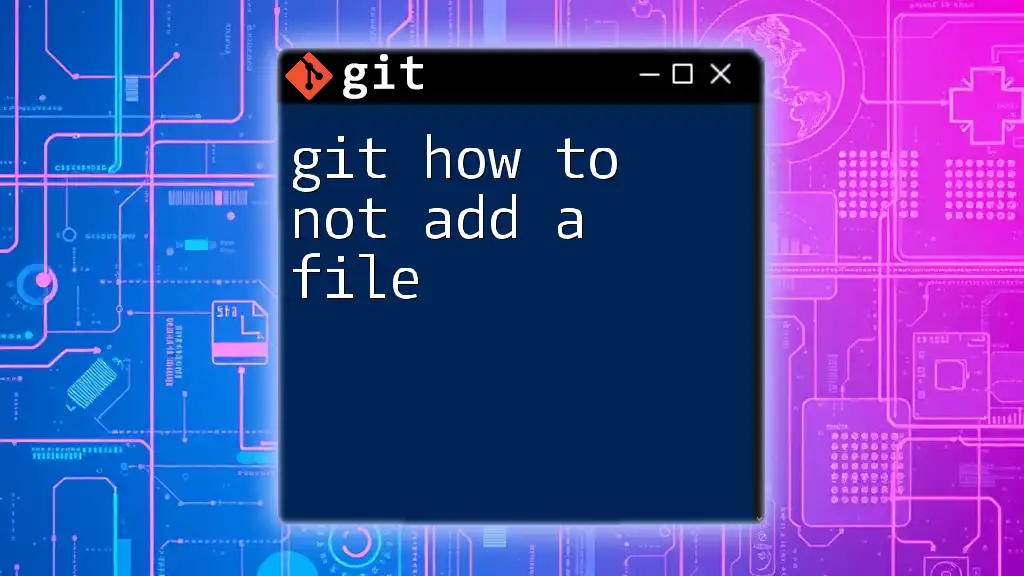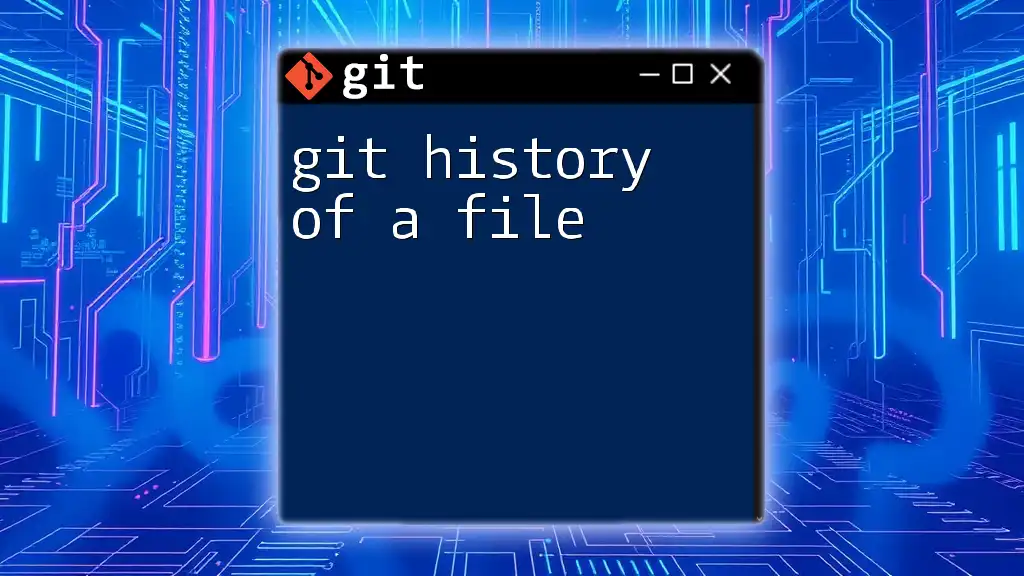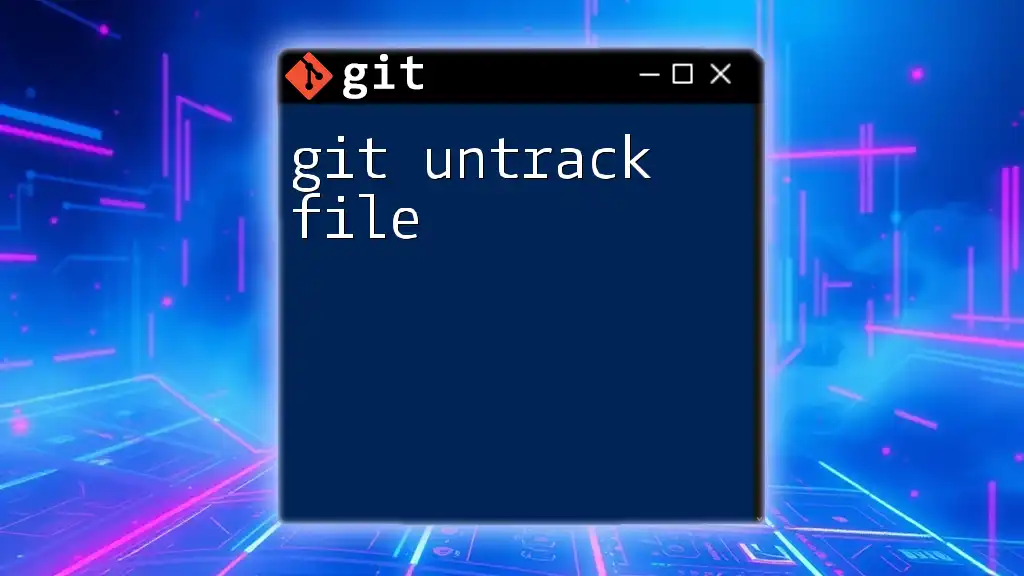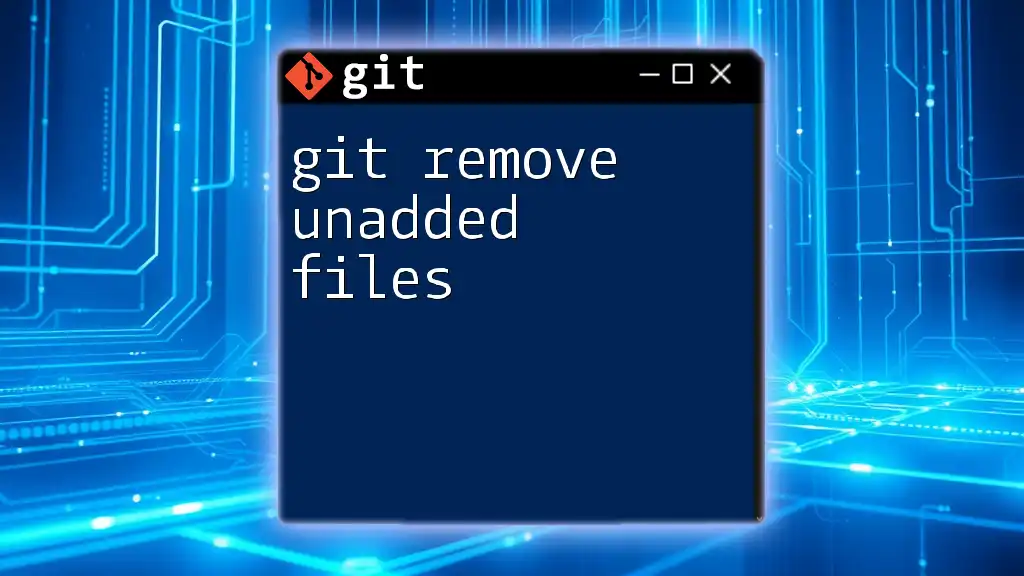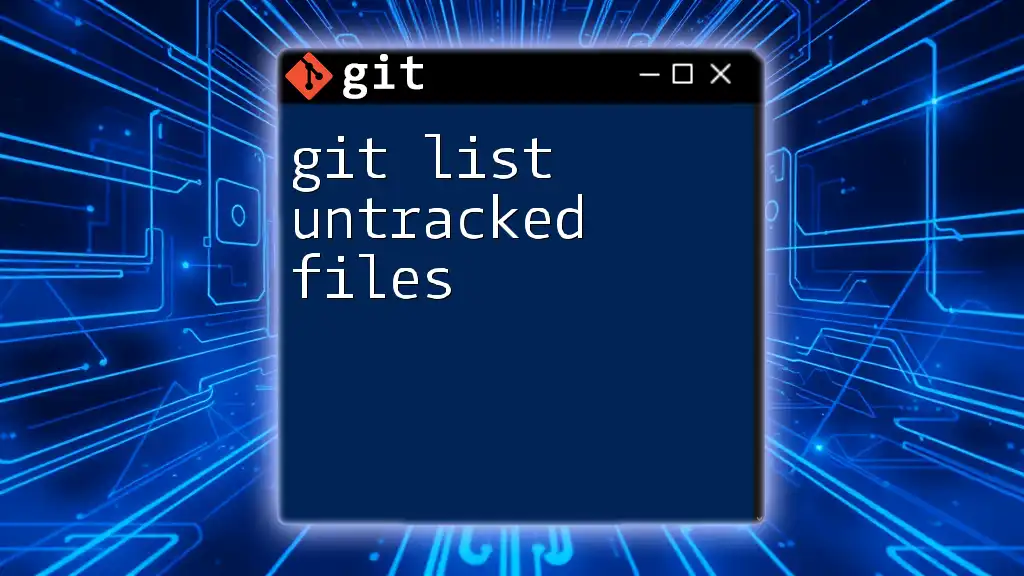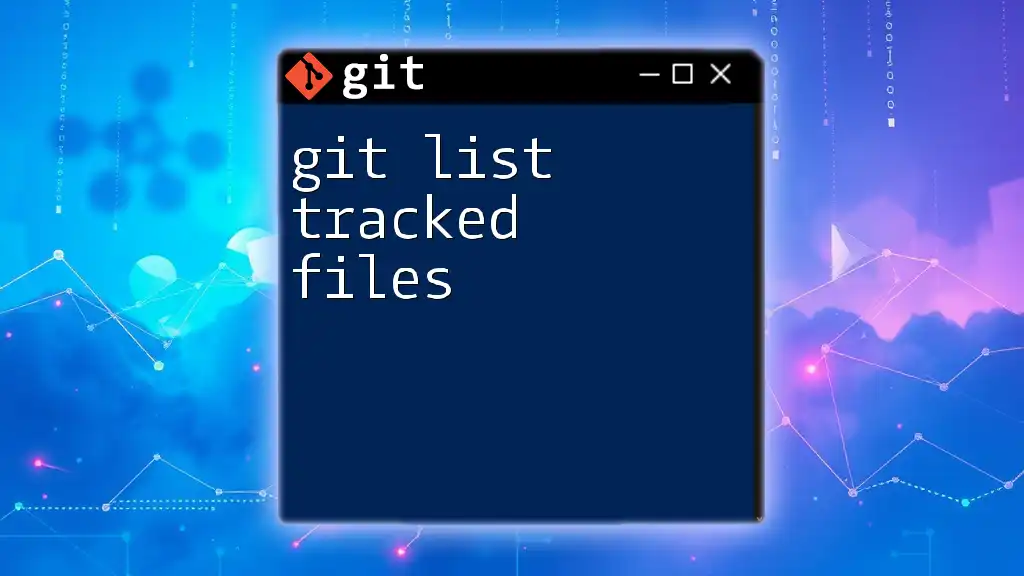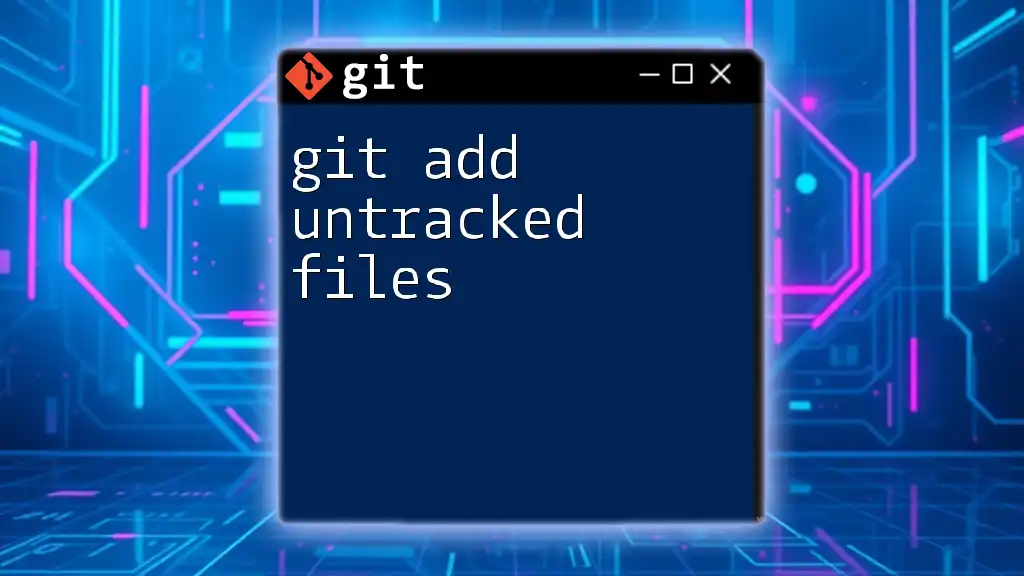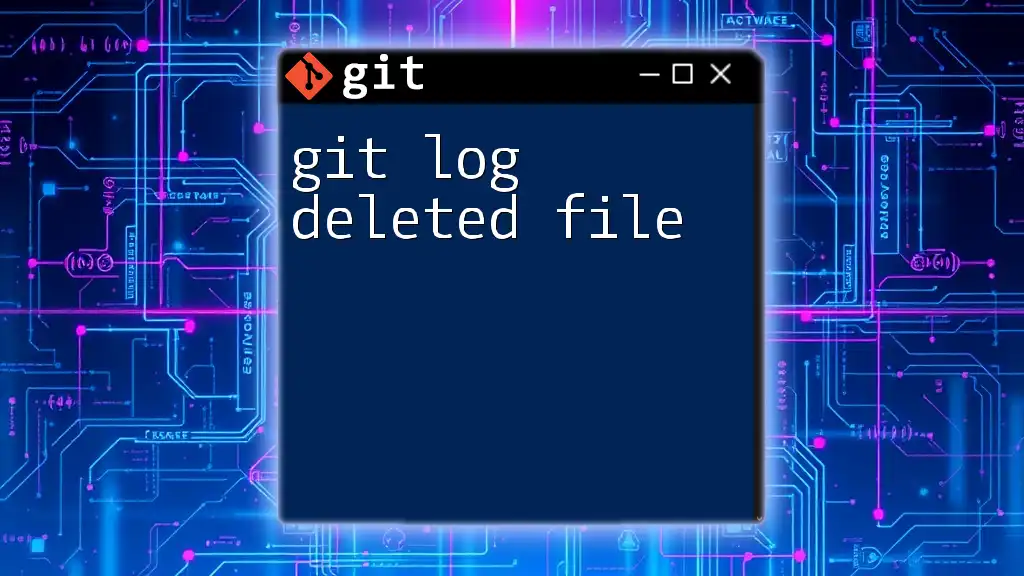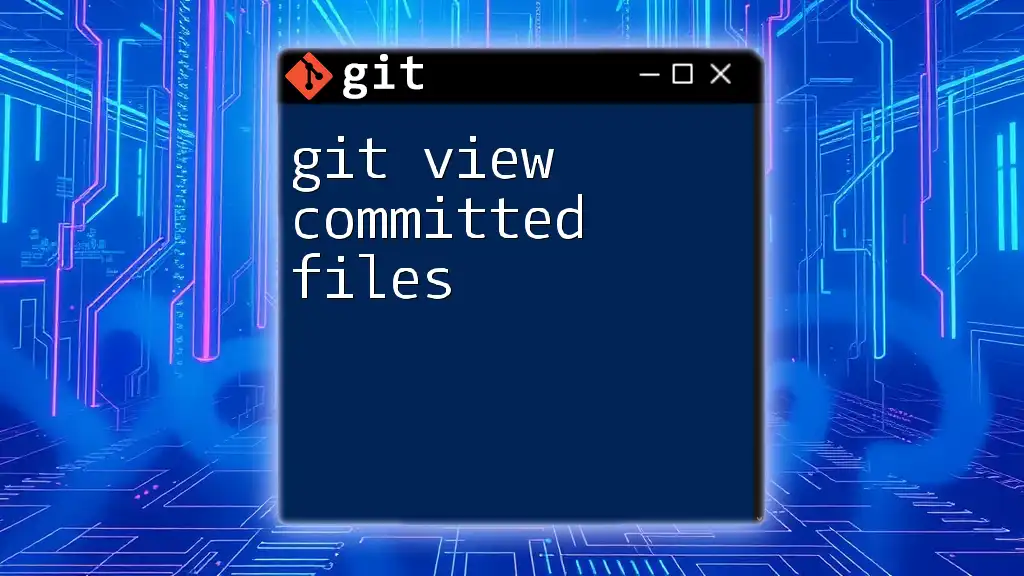To avoid adding a specific file to the staging area in Git, you can use the command `git reset <file>` after mistakenly adding it, or simply specify not to add it during the `git add` process.
git reset filename.txt
Understanding Git Staging
What is the Staging Area?
The staging area in Git serves as a middle ground between your working directory and the repository. It allows you to prepare your commits by staging changes that you want to include. Understanding this concept is essential for proper version control management, as it ensures that only the intended modifications are committed to the repository.
Why Would You Want to Not Add a File?
There are various reasons why you might want to prevent specific files from being added to the staging area:
- Temporary Files: Files like logs or cache that aren’t relevant to the project's version history.
- Configuration Files: Sensitive data or user-specific settings that should not be shared in a team environment.
- Unfinished Work: Drafts or incomplete code that aren't ready for a commit.
Recognizing these scenarios helps maintain a clean and intentional version history.
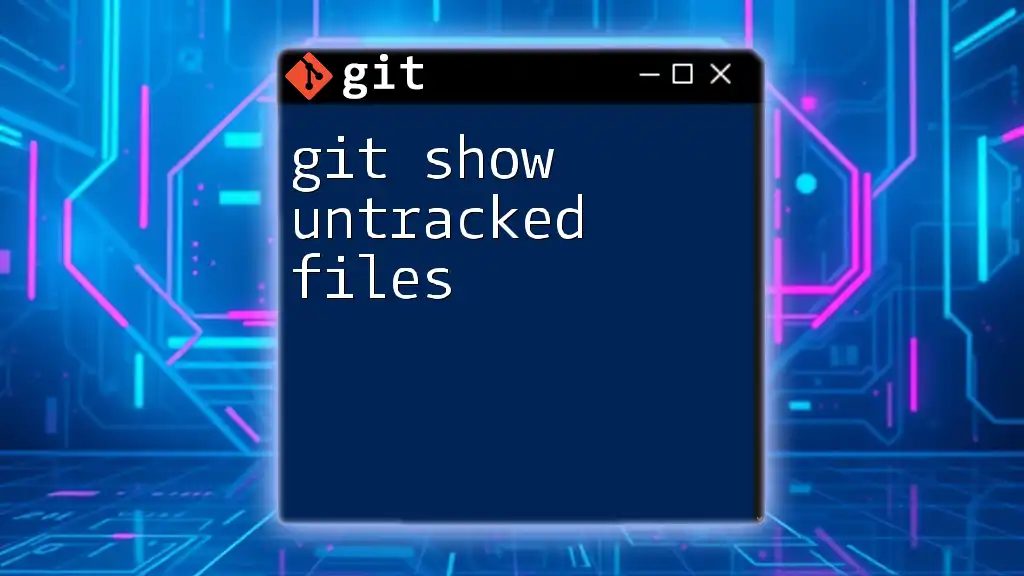
Methods to Not Add a File
Using `.gitignore`
What is a .gitignore File?
A .gitignore file specifies intentionally untracked files or directories that Git should ignore. This can significantly reduce clutter in your staging area by excluding files that do not contribute to your project.
How to Create and Edit a .gitignore File
To create and edit a .gitignore file, follow these steps:
- Create a new file named `.gitignore` at the root of your repository.
- Open it in your text editor and specify the patterns for files/directories you want Git to ignore.
The basic syntax allows you to use wildcards and directory paths as illustrated below:
# Ignore all .log files
*.log
# Ignore the entire node_modules directory
node_modules/
This file tells Git to skip all `.log` files and everything inside the `node_modules` directory when staging changes.
Using `git add --intent-to-add`
Defining `--intent-to-add`
The `--intent-to-add` option allows you to stage a file while indicating that you intend to add it later. It marks the file as added but doesn't include its content in the next commit.
Example and Explanation
To stage a file using this option, execute:
git add --intent-to-add myfile.txt
This command signals that you plan to track `myfile.txt` but may not yet want its content's changes committed. This can be particularly useful when planning a larger commit but wanting to take the precaution of not accidentally including partial changes.
Staging Specific Files
Selectively Adding Files
Another effective way to control what gets staged is to selectively add specific files while ignoring others. Use the command:
git add file1.txt
This command stages only `file1.txt`, leaving any other changes in your working directory untouched. This method is crucial for maintaining granular control over your commits, allowing you to focus on what’s meaningful without clutter.
Unstaging Files
Using `git reset`
If you accidentally stage a file you didn't intend to include, you can easily unstage it with:
git reset HEAD myfile.txt
This command removes `myfile.txt` from the staging area, reverting it back to the working directory while keeping your changes intact. This flexibility allows you to adjust your staged files as needed before committing.

Practical Scenarios and Use Cases
Scenario 1: Working with Temporary Files
As a developer, you may generate temporary files, such as logs or compiled binaries, during the coding process. By placing patterns for these files in your `.gitignore`, you can streamline your workflow and focus on the files that matter.
Scenario 2: Collaboration and Team Projects
In team environments, it’s crucial to prevent sensitive information, like API keys, from being committed into the repository. By using a shared `.gitignore` file, you can enforce consistent practices across your team, ensuring that no sensitive or unnecessary files make it into the shared codebase.
Scenario 3: Managing Config Files
Configuration files can often be specific to a developer's local environment. To avoid cluttering the repository with individual settings, such as IDE preferences, those files can be ignored. This practice not only preserves the integrity of the project’s structure but ensures every developer is free to tailor their environment without affecting others.
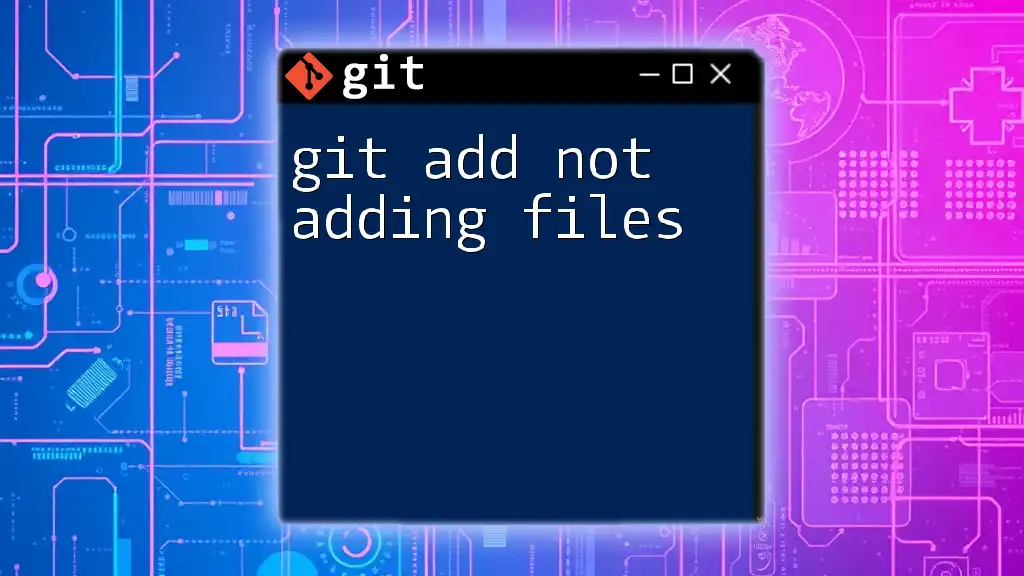
Conclusion
In summary, understanding git how to not add a file is a vital skill for effective Git usage. With tools like `.gitignore`, selective staging, and unstaging commands, you can better manage your project files. By implementing these practices, you can maintain a clean and meaningful version history that enhances collaboration and efficiency. Make it a habit to evaluate which files should be included or excluded, and enjoy a more organized and productive Git workflow!
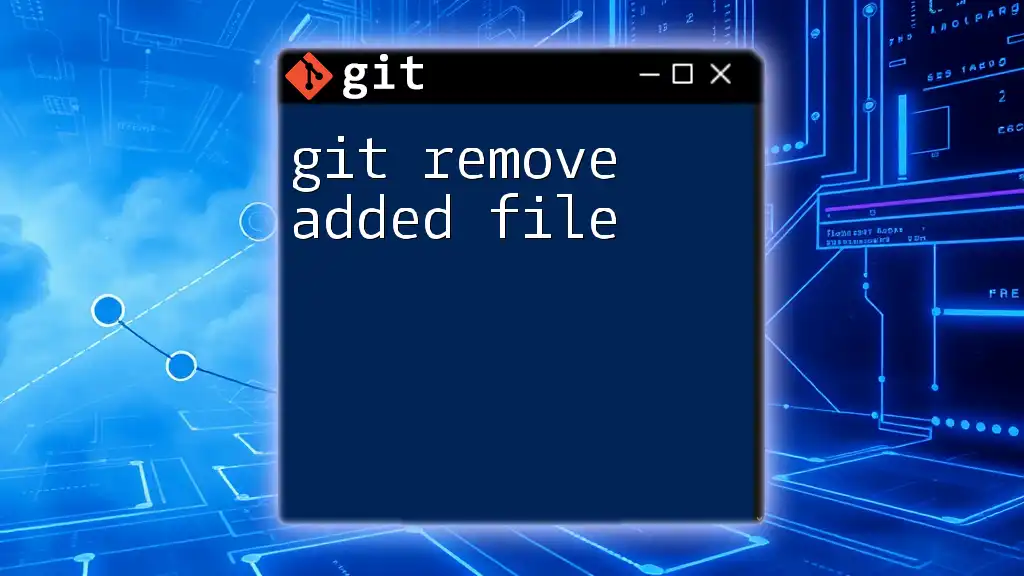
Additional Resources
For further learning, consider exploring Git command line documentation and utilize tools for managing `.gitignore` files, such as GitHub’s gitignore templates.

